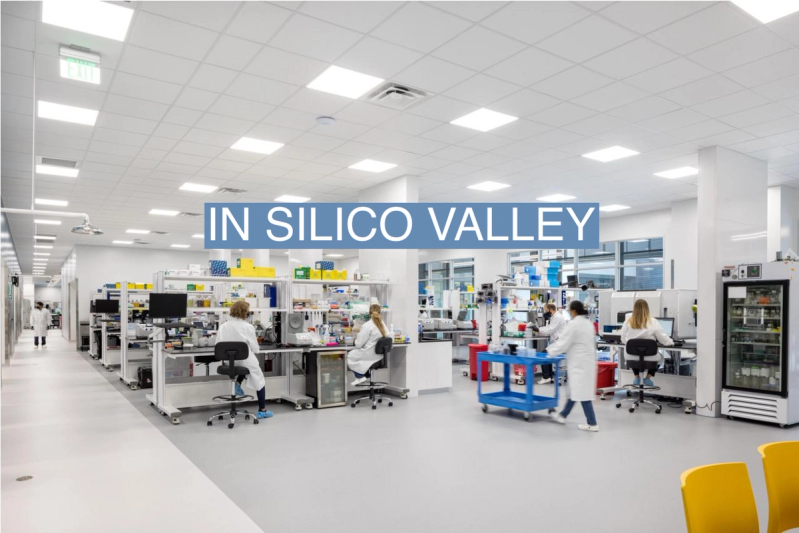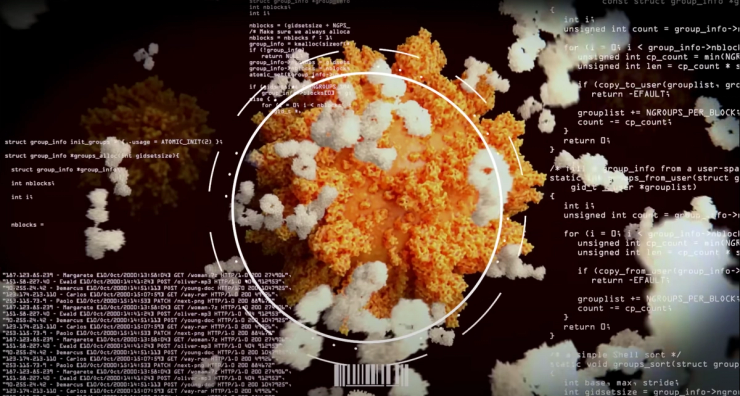The Scene
A new wave of Silicon Valley computer scientists are leaving Big Tech for biotech, as experts predict advances in artificial intelligence will turn curing diseases into a software problem.
It turns out many of the same skills software engineers have been using on self-driving cars and other machine-learning challenges are in demand more than ever in bio sciences, where new AI algorithms are helping scientists create drugs from scratch using code.
And there is a lot of money to be made. Morgan Stanley last year estimated AI in drug discovery could lead to $50 billion in industry growth over the next decade.
It’s causing people like Lance Martin, who has a PhD in computational biology but has spent years working on autonomous driving at companies like Uber, to revisit new opportunities in biosciences. “The interesting potential shift now is the application of some of these newer methods, such as language models to drug design. It’s super exciting,” he said.
Advances in AI inspired biotech firm Absci to reframe its focus. Founded in 2011 by Sean McClain, Absci was focused on its patented, genetically-engineered form of E. coli bacteria used for creating proteins. Then a few years ago, McClain made a bet that the transformer models pioneered by Google were about to change the biotech industry.
Absci acquired Denovium, an AI company, and began hiring employees from Silicon Valley firms like Tesla and OpenAI. It built a multi-million-dollar supercomputer in Oregon that could use data Absci had gathered on protein interactions to help generate new, potentially lucrative drugs.
Absci has since been partnering with big pharma companies like Merck and developing drugs of its own. “The future of drug development is designing drugs with the click of a button on a computer with generative AI,” McClain told Semafor.
Joshua Meier, Absci’s chief AI officer and a former OpenAI researcher, said the company is already generating proteins that look like they could be promising drugs.
“You could imagine a future where the models get so good that the probability of success starts to go up dramatically,” he said. “96% of drugs will fail in a clinical trial. Imagine you’re no longer 4% success, but you get up to 40% success.”
Know More
A lot of the excitement about AI’s use in biotech was spurred by a Google-funded project called AlphaFold. DeepMind, a U.K.-based company acquired by Google in 2014, used new artificial intelligence methods to make a major scientific breakthrough in the understanding of proteins. AlphaFold, for the first time, allowed scientists to accurately predict the shape of a protein — with its seemingly random folds — based on its amino acid chain.
This achievement led to an explosion of follow-on research into proteins, which could create software that can make new proteins to achieve certain purposes, such as attacking cancer cells.
In the same way it’s now possible to describe an image and see it instantly created by DALL-E or Midjourney, it may be possible to do something similar with proteins, creating drugs at a rate exponentially higher than was ever thought possible.
“The intersection of ML [machine learning] and bio is where we’re going to see the greatest positive impact on humanity. I think we’ll be able to address most diseases and other quality of life issues,” Kyle Vogt, the CEO of robotaxi company Cruise, said in a text message exchange with Semafor. He said that if he had to start a new company today, it would be in biotech.
“All of a sudden, the industry needs technologists,” said Nan Li, co-founder of Dimension, a new venture firm focused on the intersection of life sciences and software. “From data science skills, broad AI skills, the fields are merging in a pretty big way and life science as a category is opening its doors.”

Step Back
Hugging Face, one of the hottest companies in AI that serves as a repository of the latest open-source models, employs an expert focused on the healthcare and biomedicine field, showing just how intertwined the latest advances in AI are with biotech.
Katie Link, who was in medical school before taking a sabbatical to join Hugging Face, said the AI models aimed at the healthcare space, such as the Nucleotide Transformer model, are exploding on the platform.
That’s bringing people together, allowing traditional life sciences researchers to collaborate with machine learning experts to advance new models and techniques in life sciences.
“We were actually more of an AI winter cycle within the healthcare and AI space right before ChatGPT happened. But now it’s just completely switched,” she said.
In the meantime, Silicon Valley is spawning new biotech entrepreneurs, increasing competition in the industry.
Frank Li, a computer scientist who has worked at companies like Palantir and Google, said he had an epiphany while working in machine learning at the search engine giant. “It hit me one day that a lot of the very same exciting technologies that were being deployed for consumer technologies could be very gainfully deployed into life sciences,” he said.
Li began working on AI at Alphabet-owned Calico Labs, which is aimed at increasing the human lifespan. Now, he’s launching his own biotech firm, called Stately Bio, that is still in stealth mode.
In life sciences, even “curing cancer” is thinking small, Li says, because that would only increase overall life expectancy by a few years. “The opportunity is really much more immense than that,” he says.
Reed’s view
Some of the greatest minds in artificial intelligence are moving into life sciences. Why? Because curing disease is now one of the most interesting and cutting-edge areas of computer science.
And it happened because people love photos of cute cats and ludicrous conspiracy theories.
For a few decades, the most interesting thing in computer science was the internet. Some of the greatest minds in the world were drawn to the immense promise of all the world’s information being available with the click of a mouse.
The National Science Foundation helped fund brilliant academic researchers who pioneered some of the biggest advances in the internet, from the Mosaic browser, which became Netscape, to the Digital Library Project, which became Google.
With Web 2.0, people could create content and post it on the internet with so much ease that it created sets of data larger than anyone could have imagined.
In the background, companies like Google and Facebook were applying AI techniques that were first invented in academic research labs to the consumer data they were collecting.
To the chagrin of many, these huge technological breakthroughs seemed to lead to frivolity and heartbreak. First, we got cat photos. Then, we got disinformation campaigns. Big Tech was hacking your brain with artificial intelligence to pioneer ways to keep you scrolling and predict what kind of ads you’d click on.
But those algorithms were useful for other things, like self-driving cars. Big Tech reinvested ad revenue into the next big businesses created by artificial intelligence. So tech companies hired the best minds in academia to push AI forward and they acquired companies like DeepMind.
One of Google’s AI divisions, called Google Brain, invented transformer models (which led to ChatGPT) and then Google’s DeepMind used the transformer models to practically solve the protein-folding problem that had stumped biology for 60 years. It wouldn’t have happened without search ads.
We often point out how seemingly good or innocuous new technology can be used for nefarious purposes. But the opposite is sometimes true.
When self-driving car engineers decide to pursue potentially life-saving drug discovery, it’s a great reminder that it’s hard to call any new technology “bad” because we have no idea where it may ultimately lead.
Room for Disagreement
For all the excitement of the possibility of AI in biotech, it’s important to temper expectations. Big breakthroughs like AlphaFold tend to be followed by long slogs to turn discoveries into life-saving medicine.
Jonathan Montagu, CEO of HotSpot Therapeutics, said much of the talk around AI in healthcare has focused on “sensationalized depictions of cool new AI-based tech. Ironically, that hype has done more harm than good by questioning the credibility of the technology and limiting the full potential of AI-driven advances.”
The View From The U.S. Food & Drug Administration
One big bottleneck in AI-related drug discovery is clinical trials. If AI is going to be used to rapidly increase the number of drugs discovered, there need to be advances in the way those drugs are tested, which is currently a costly and slow process.
Notable
- Forbes has a great explanation of why DeepMind’s AlphaFold was so important.


